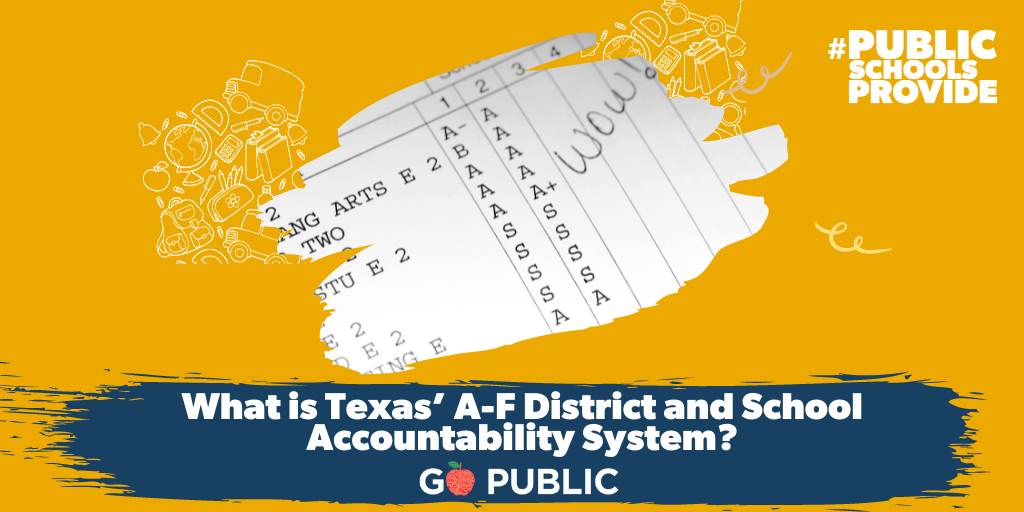School Ratings
One factor parents look for in researching a school is the rating. However, in a Google search “school ratings near me”, the top 10 results are for-profit companies with their own rating system.
For example, Niche and Great Schools use a variety of measures to rate a school. They also monetize their site pages through ads and paid profiles.
On Great Schools’ “Top 5 Schools in San Antonio” results, four of the schools are charter schools. The data is based on Great Schools’ model, not the A-F grading system from TEA.
That said, the A-F system in Texas is flawed at best.
Former Northside ISD Superintendent Dr. Brian Woods explains, “…of all the hundreds of variables that impact student achievement – both outside and inside of the school house, fully one third of the overall model that awards grades to campuses is determined by one variable – family economic status.”
School Rankings
In Texas, school rankings and grades are assigned by the Texas Education Agency through the A-F Accountability System. The system is criticized by educators and administrators. Texas Association of School Administrators Executive Director Kevin Brown states:
“School districts should be accountable to their local communities first, and the measures of accountability should represent the complex work that schools do to prepare children for the 21st century, including teaching innovation, leadership, critical thinking and real-world problem solving.
To think that one letter grade somehow accurately reflects the complex work of hundreds of teachers and thousands of students on one campus, let alone an entire district, is really an insult to their hard work. We expect more for our children and our schools.”
Many districts develop their own accountability systems. This level of transparency evaluates progress, success, and areas of improvement. Alamo Heights Superintendent Dr. Dana Bashara shares in a statement:
“In Alamo Heights ISD, we have long cautioned against an over reliance on high stakes testing because it is a system based on a single test administration on one day of a student’s performance in time, and it is not designed to measure a variety of important things valued by our community.”
“The rich learning experiences that your children experience in Alamo Heights schools cannot be reduced to a single score on a single day.”
“We use multiple measures to evaluate the effectiveness of our academic programs and the progress of our students. And, over the past four years, with input of school staff, leaders, students, and community members, we have designed a comprehensive local Community Based Accountability System (CBAS) to anchor our continuous improvement efforts.”
Texas School Report Cards – What is Texas A-F Accountability?
In Texas, schools are graded by the Texas Education Agency under a system called, A-F Accountability. A-F calculates a school’s score under three main domains:
- Student Achievement
- School Progress
- Closing the Gap
The Student Achievement domain calculates district and campus performance in three areas:
- Performance on STAAR assessments (40%)
- College, Career, and Military Readiness (CCMR) indicators (40%)
- Graduation rates (20%)
School Progress domain is based on two variables:
- Students that grew at least one year academically (or are on track) as measured by STAAR results.
- Achievement of all students relative to districts or campuses with similar economically disadvantaged percentages.
The Closing the Gaps domain uses disaggregated data to demonstrate differentials among racial/ethnic groups, socioeconomic backgrounds, and other factors. It aligns the state accountability system with the Every Student Succeeds Act (ESSA). (TEA)
The Every Student Succeeds Act (ESSA) is a federal law passed in December 2015. It requires “the implementation of academic standards, assessments, or accountability systems; and how to meet the needs of disadvantaged students, children with disabilities, and English learners, the needs of low-performing schools, and other educational needs of students.”
Texas School Grades
Dr. Woods’ testimony on behalf of TASA and in opposition of HB 3731 states: “There is a clear association between grades and socioeconomic status. This is true for districts and even truer for campuses.” Woods breaks it down further regarding Texas school grades:
“Statewide, at the district level, 75% of districts that scored a D or F serve a population that is equal to or exceeds the state average for economic disadvantage.
Statewide, at the campus level, 87% of campuses that scored at D or F serve a population that is equal to or greater than the average percentage of economic disadvantage. Looking at the other end of the socioeconomic spectrum, campuses that serve a population that is between 0 and 20% economically disadvantaged, 98.6% scored an A.
Without any provision for multiple measures beyond the STAAR, labeling more campuses unacceptable simply puts more emphasis on the test that, outside of TEA, is wildly unpopular and generally considered a poor measurement, by itself, of either a child, a teacher or a school.”
Learn more about A-F Accountability in the Former Clear Creek ISD Trustees’ white paper here.























